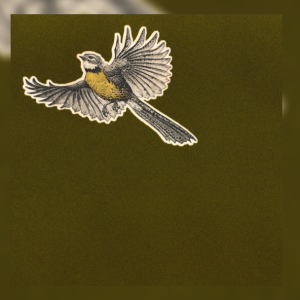Ficino Ensemble deliver well-programmed concerts, often combining familiar and not-so-familiar material, have been must-see events for Dublin chamber music audiences for several years, so this new recording on Ergodos is especially welcome. This flexible group draws on artists from both RTÉ orchestras, and elsewhere, and—true to form—is heard here in three different combinations of strings and woodwind. This first release by the ensemble is full of energy and openness—a playfulness hinted at in Kelvin Mann’s Fantail studies that adorn the cover: a figure dancing around, ready to suddenly flit away. The selection of pieces, a kind of mini-concert, reflects a curiosity to explore repertoire from unexpected angles. Rather than open with something short and understated, the first piece is instead the most significant and longest of the set, the Clarinet Quintet by Johannes Brahms.
This evergreen work is easily one of his best pieces, mysteriously mixing playful gestures and nimble elegance with moments of bleak introspection. One highlight is the lyrical second movement, when Ficino Ensemble —as if re-echoing a strange dream— seems recast as an imagined Hungarian gypsy band, the clarinet swooning and pirouetting above the cimbalom-style tremolos in the strings. As well as the excellent string-playing of Elaine Clark and Lynda O’Connor (violins), Nathan Sherman (viola) and Ailbhe McDonagh (cello), the Ficinos have an ace up their sleeves with the clarinet playing of Macdara Ó Seireadáin. Ó Seireadáin brings a cool, smooth gleam to this work, in a compelling reading that is always clear and attractive, with dashes of slick virtuosity.
The opening of Garrett Sholdice’s Winter seems to hint back at the final moment of the Brahms, holding that minor chord like a stretched echo. Shifting the mix to string trio and clarinet, and adding the harp of Geraldine O’Doherty, the title track explores possibilities of stasis and movement. The ensemble paces this material beautifully, as if allowing each moment its own quality, creating a play of gentle shadows and cross-currents. This has also been used for the haunting video by Laura Sheeran, seen here.
This recording offers its final surprise by jumping back a century for Ravel’s Introduction and Allegro for string quartet, harp, clarinet and flute (bringing in flautist Sinéad Farrell). Another exploration of texture and timbre, this opens up something new again, as Ravel’s artistry turns the chamber ensemble into a miniature orchestra. The group revels in the glossy richness of the score, gently drawing the listener into its world. Originally intended as a harp showpiece, harpist Geraldine O’Doherty thrills with some superb playing here.
Throughout, the expressive feeling for ensemble is aided by both the well-balanced recording achieved by the Ficino Ensemble and the keen acoustic of the Freemason’s Hall. This engaging recording marks an impressive benchmark in Irish chamber music, and will hopefully encourage more to follow.



